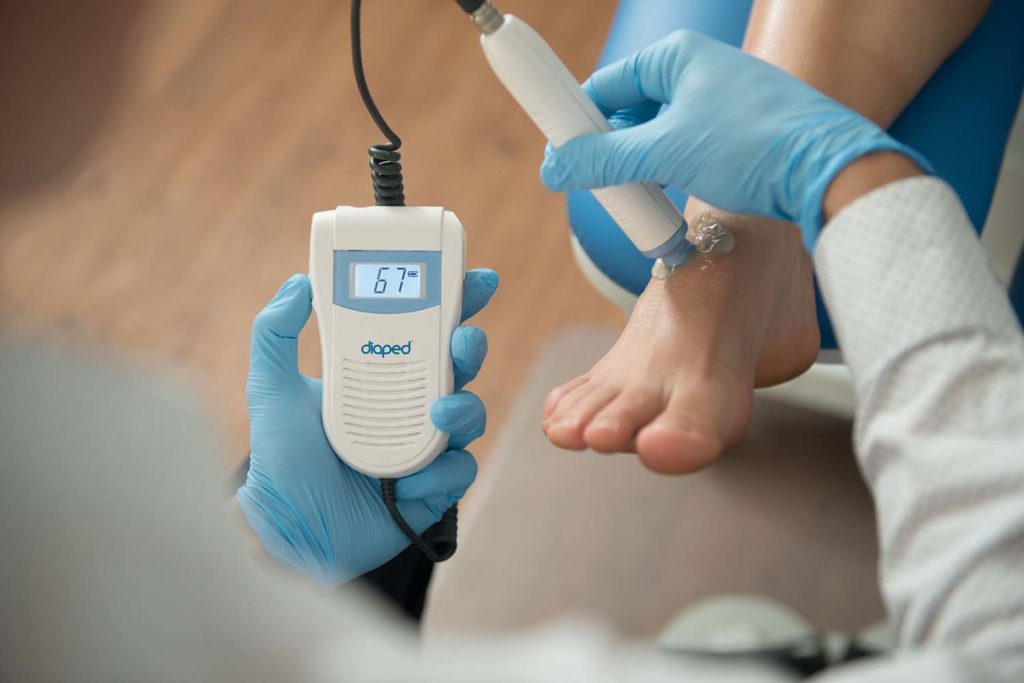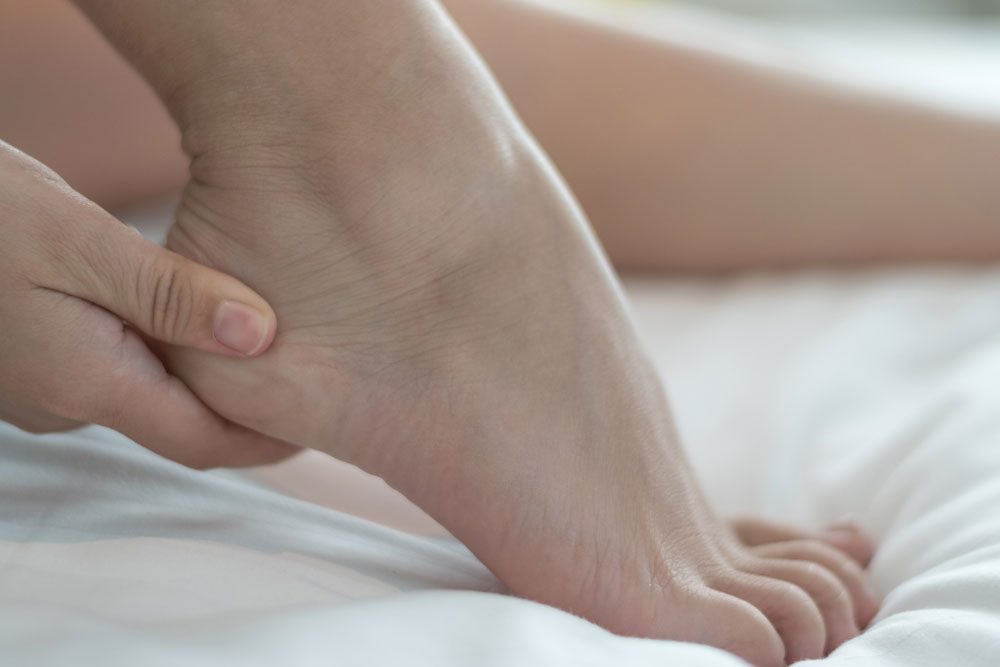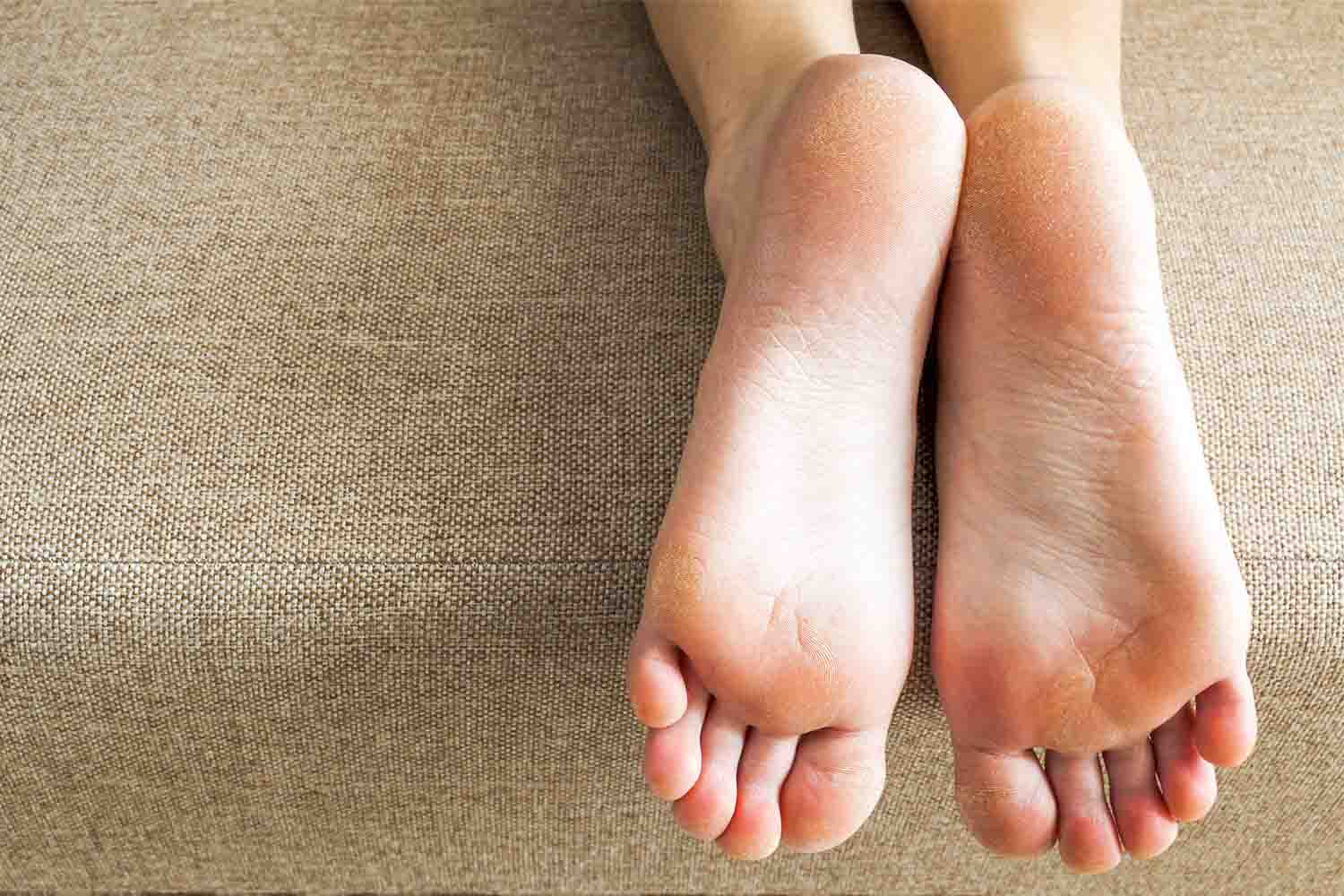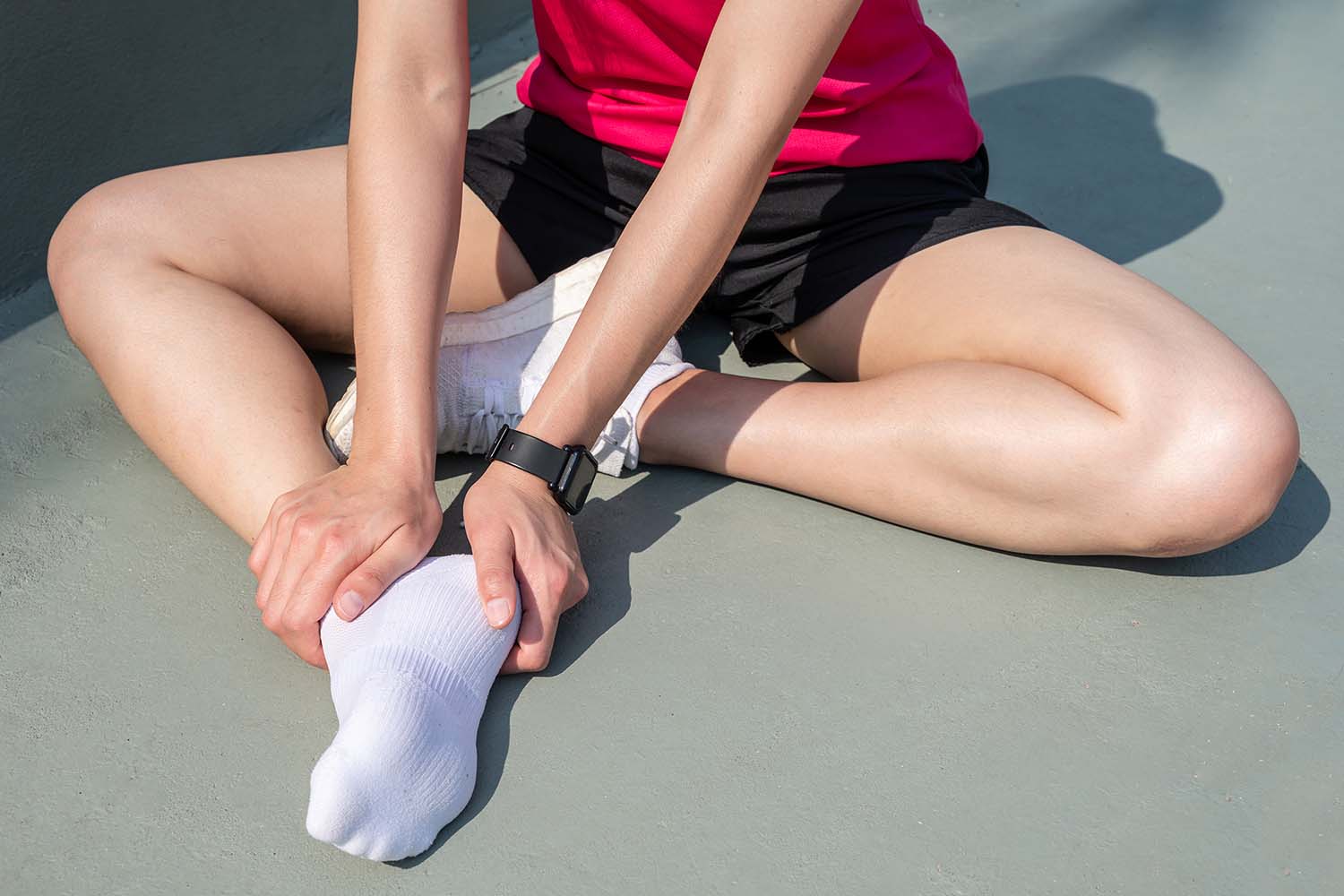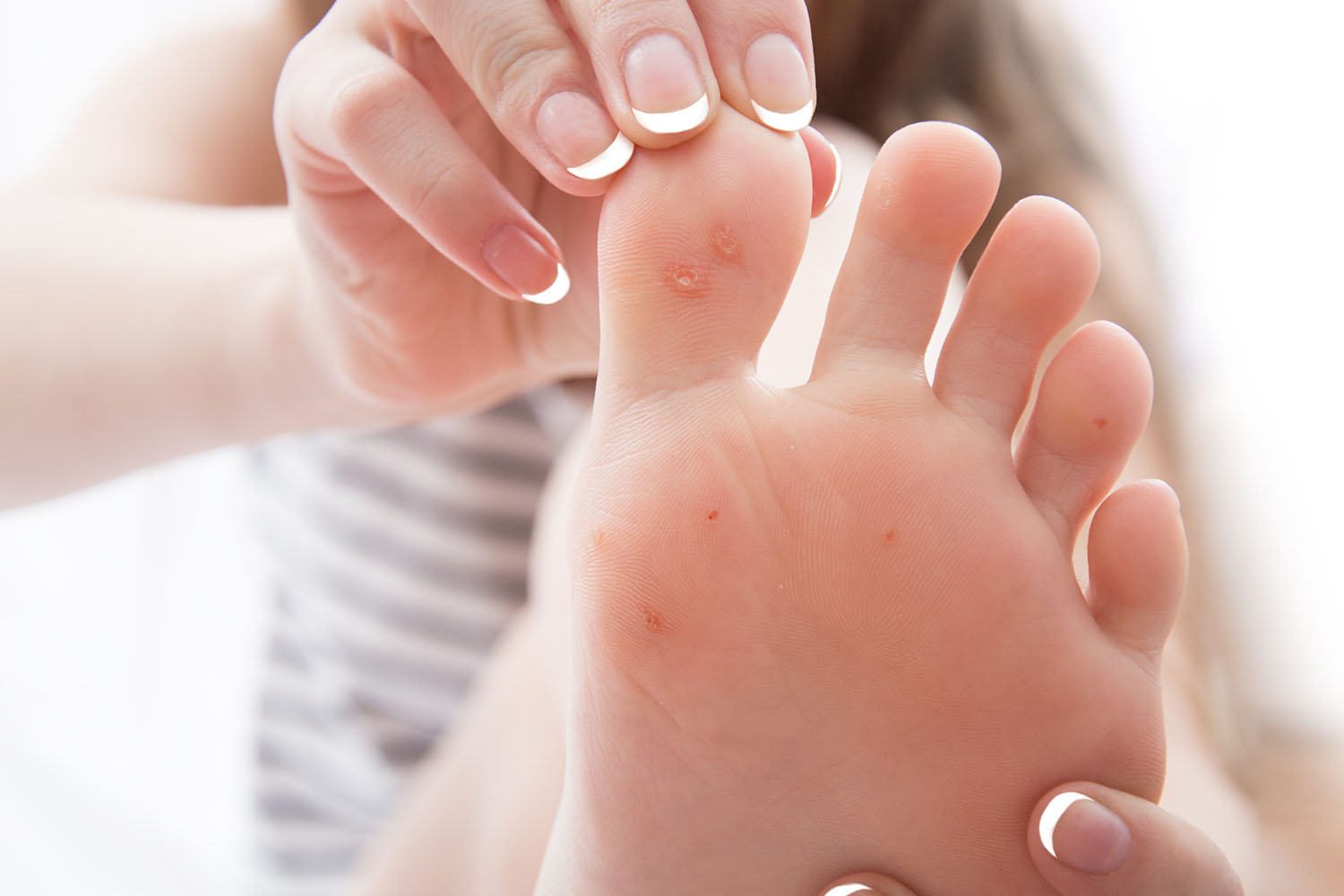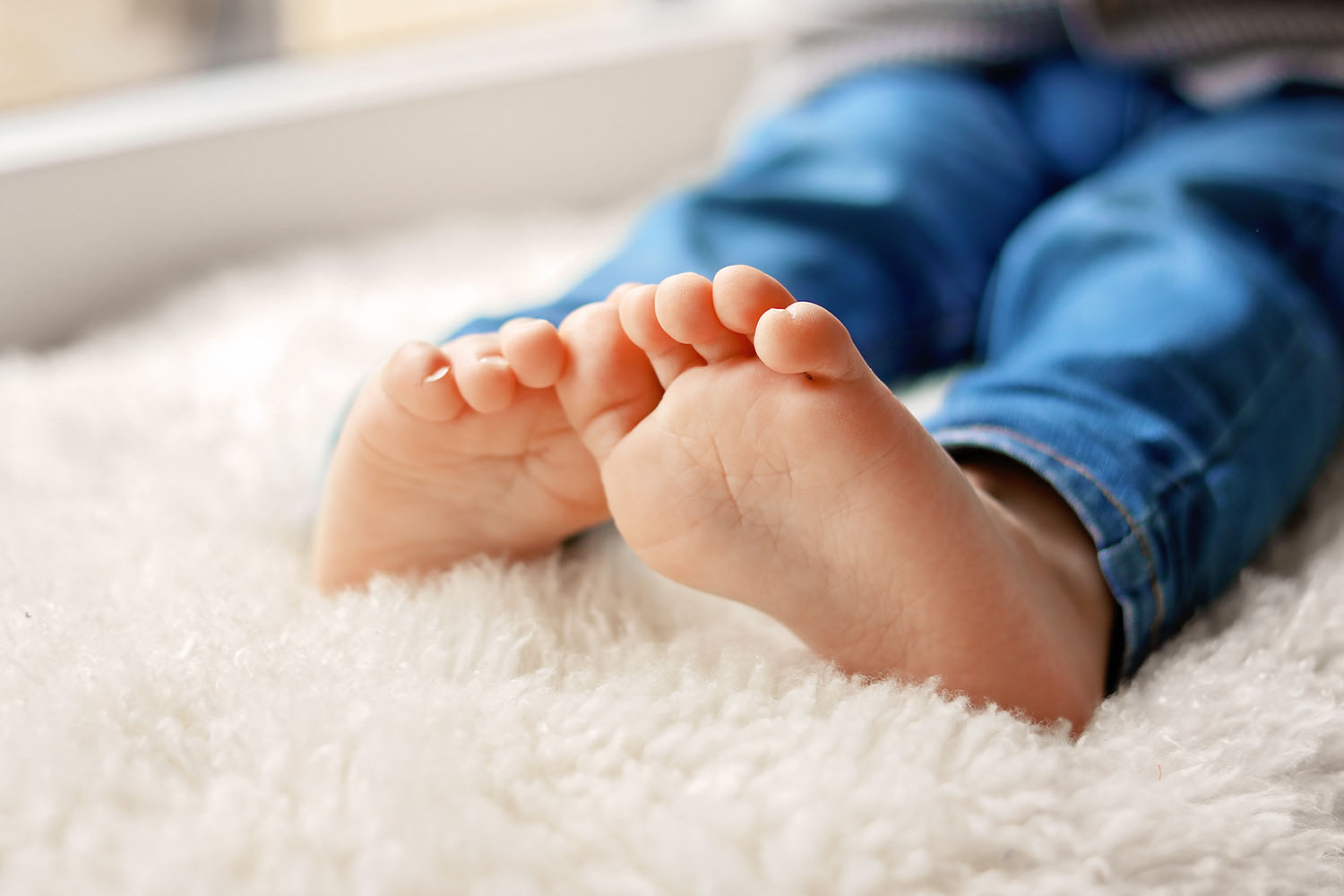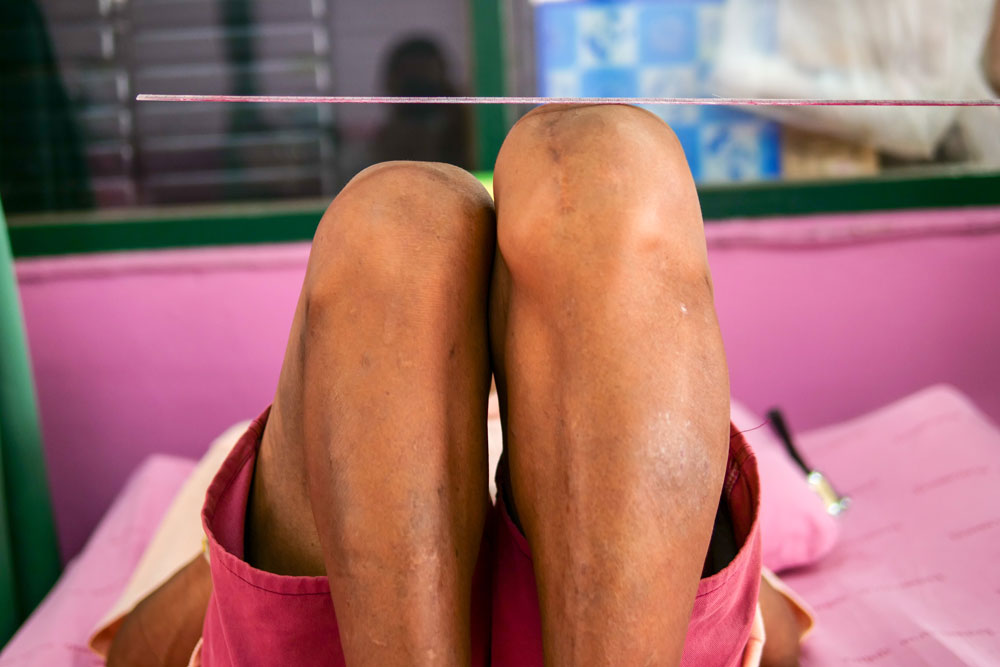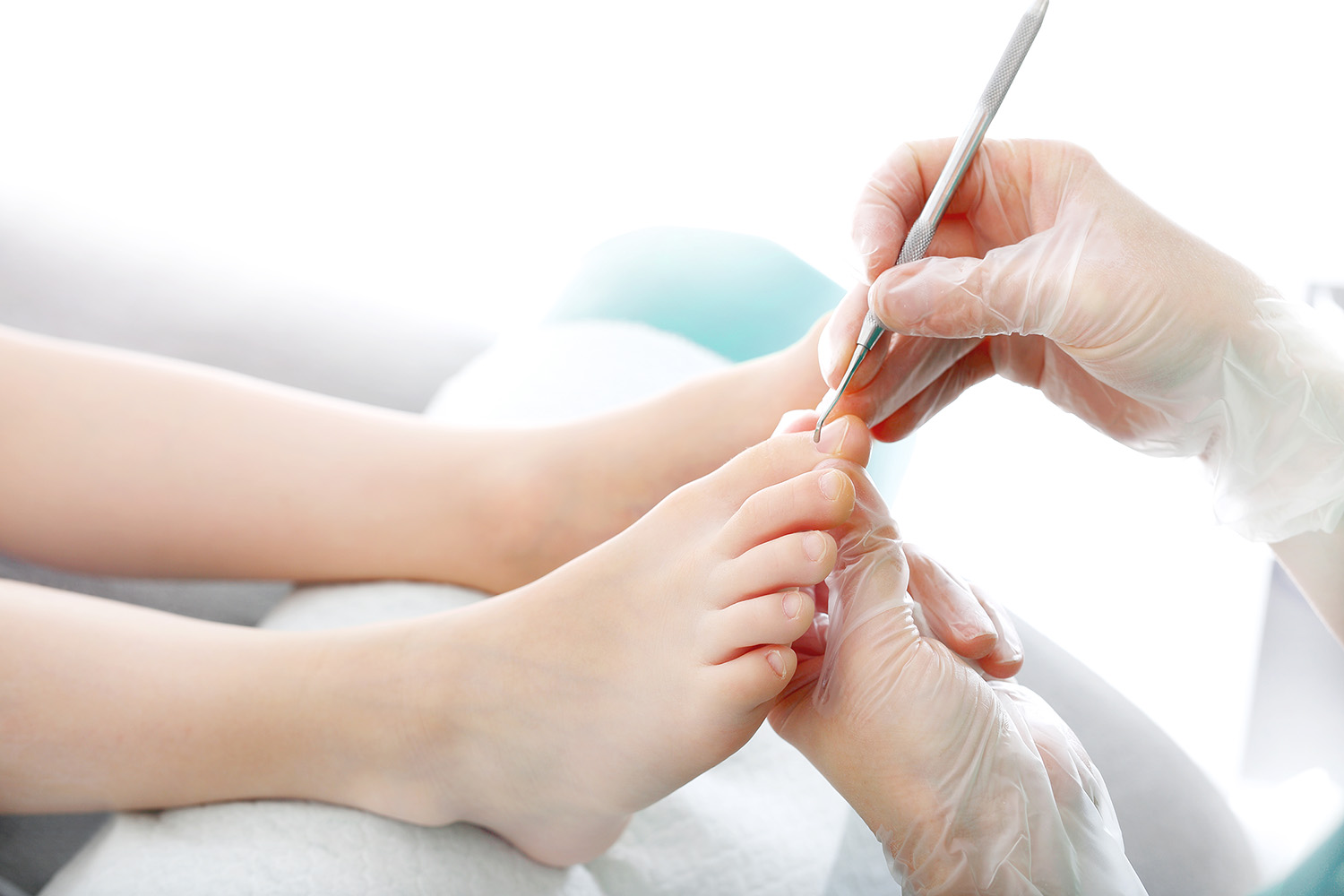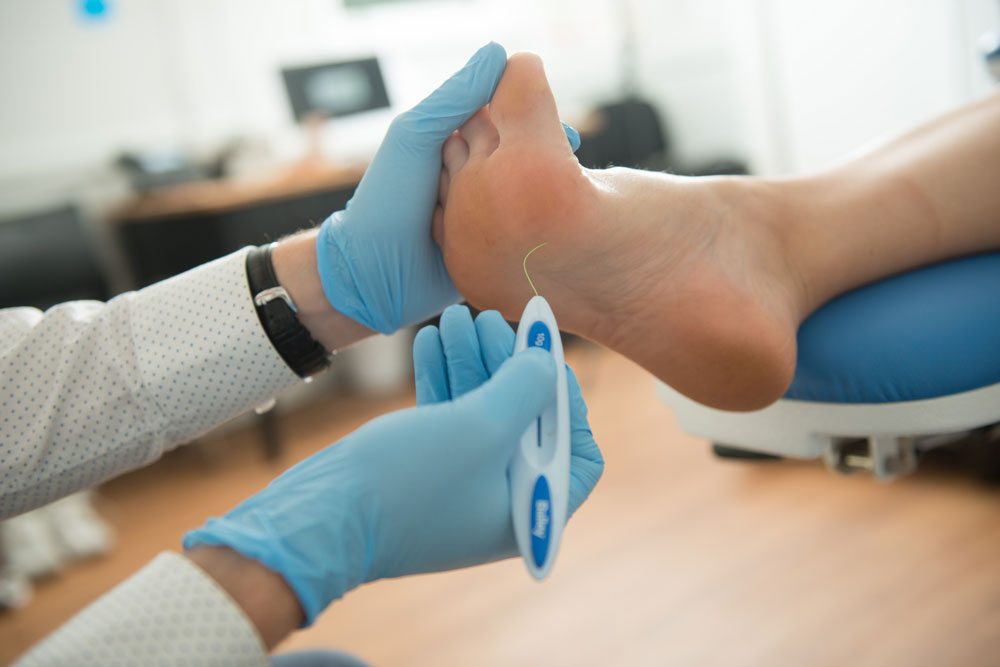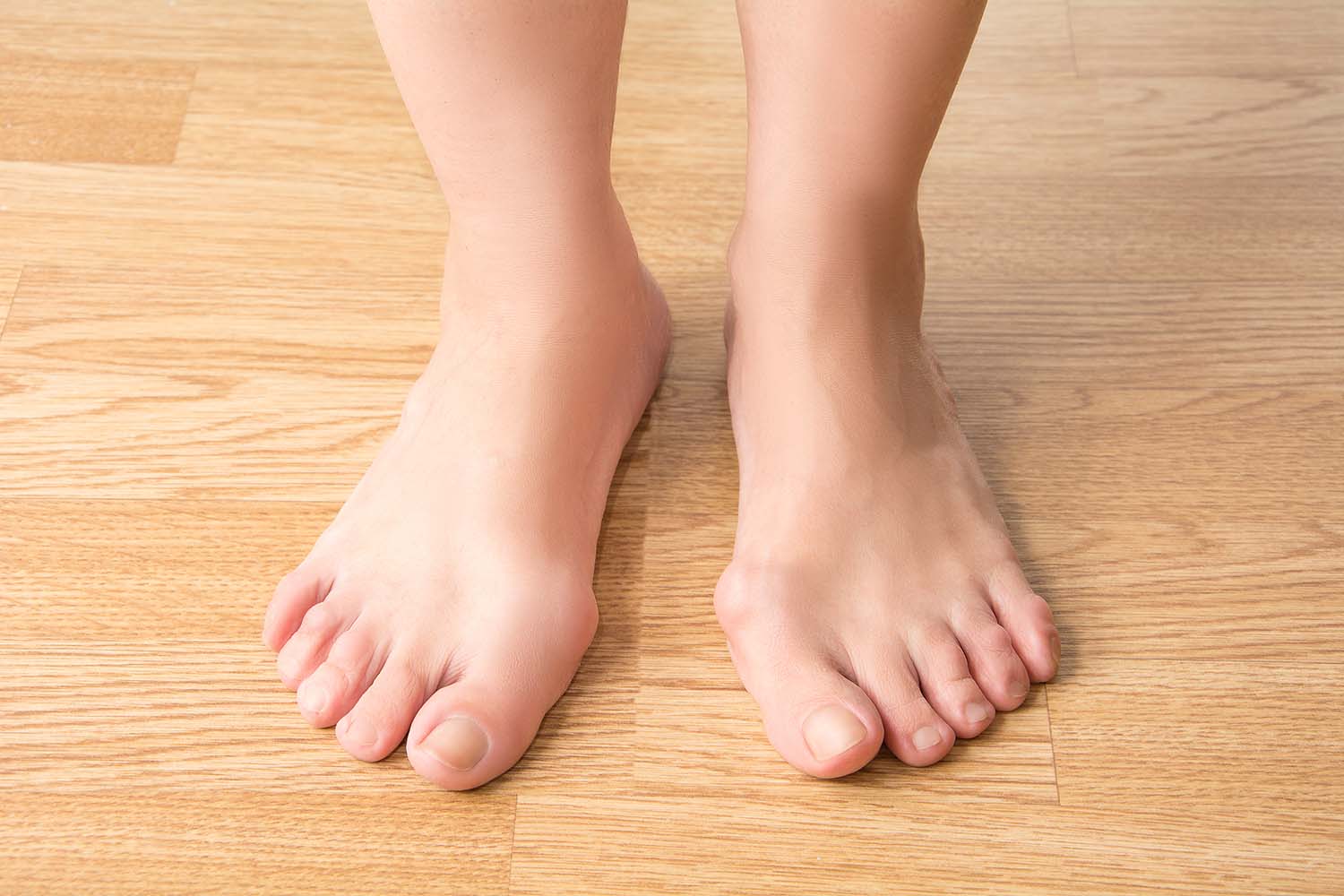Bunions
Bunions present as a bony bump sticking outwards at the base of a person’s big toe. Not only can these be quite painful, but they can also make finding shoes a nightmare. Bunions tend to look mild to begin with, but only get worse with age and if left untreated, they can eventually warp the entire shape of the foot.
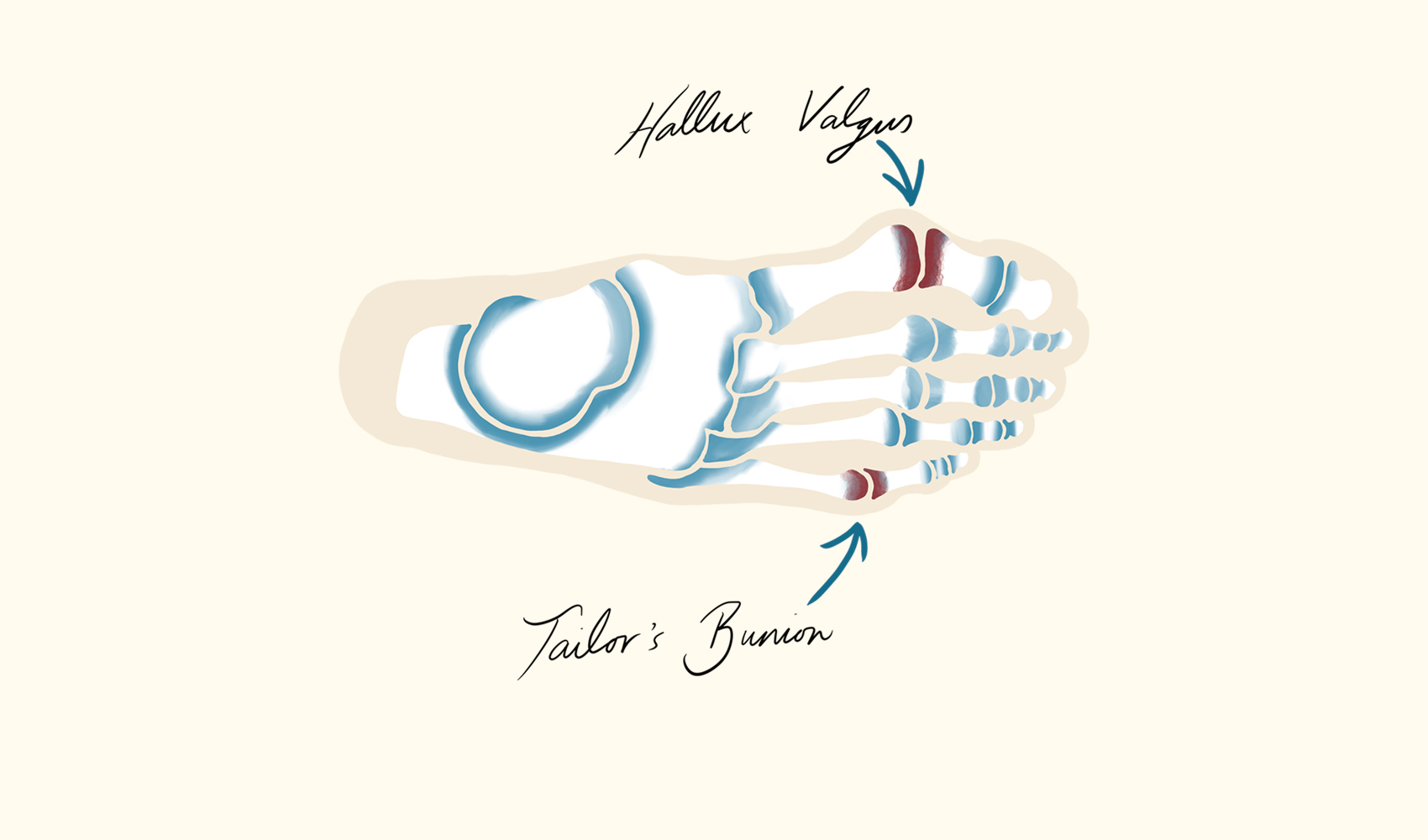
What are Bunions?
Bunions are a debilitating condition that many people experience. Developing slowly over time, bunions are often accompanied by irritation, pain, redness and swelling. There are two types of bunions. A bunion of the big toe called hallux valgus and a bunion of the small toe called tailor’s bunion or bunionette.
Types of Bunions
Hallux Valgus
Hallux valgus often presents as a painful bony bump on the inside of the foot at the base of the big toe. Gradually the normal skeletal structure shifts to the point where the big toe points inwards towards the second toe. In severe cases the big toe can force the second toe completely out of alignment. In these instances, corns/calluses tend to develop where the first and second toes rub against one another.
The join at the bottom of the big toe carries a large portion of a person’s weight while walking and running. Due to the big toe being very important, if the bunion progresses, the foot’s functional ability decreases. Usually, the limitation is noticed through reduced motion at the joint when weight bearing. The joint may become so incredibly sore and stiff that wearing generic shoes becomes very painful.
As the development of a bunion is slow forming, at the beginning the deformed shape may be flexible. This means the toe can be pulled straight. Over time however, the deformation becomes more rigid, fixed and inflexible. The issue that arises when bunions are left untreated is that the alignment becomes abnormal and so undue stress is placed at the joint, leading to articular surface breakdown which hinders mobility but also causes arthritis and abnormal foot mechanics.
Tailor’s Bunion / Bunionette
Very similar to a bunion, the tailor’s bunion presents itself as a bump on the outside of the foot at the base of the little toe. This protrusion got its name from tailors who traditionally sat cross-legged when working. Over time this pushed the edge of their little toe into the ground and the bony lump developed. Some people refer to this small toe bunion as a bunionette.
Classifying Bunions
Podiatrists and doctors will often use a classification adopted from the Manchester Scale to grade the severity and extent of the bunion from stage 0 through to stage 3. Stage 3 represents the more serious and chronic presentation of a bunion with severely reduced movement through the joint.
What Causes Bunions?
The cause of bunions will be unique to each person, however, there are some common contributing factors worth noting. Bunion causes include:
Hereditary
The condition can be hereditary. A person will often report that a family member has similar feet and will want to know treatment options to help delay or prevent their toes getting worse as they have seen first-hand how it has limited the quality of life of a family member.
Poor Fitting Footwear
People who enjoy wearing narrow, tight and/or high heeled shoes may notice that a bunion develops or becomes worse with time. Many women’s love of attractive yet often uncomfortable footwear means that they tend to develop bunions far more than men, most notably as they get older
Flat Feet (pronating foot type)
A flat foot type naturally places excessive pressure on the inside of the foot. This means that the big toe joint experiences undue pressure with each step.
Arthritis
Common conditions such as osteoarthrosis, rheumatoid arthritis and gout can lead to deformation of the bones and therefore a bony bunion formation.
Surgery
Post-surgical malfunctions have been known to lead to bone deformities. Some people have reported that bunions have begun to develop after an unrelated surgery of the feet or lower body.
Muscular Imbalances
Imbalances in foot function can result in contraction or excessive tightening of a person’s muscles and subsequent weakness in the opposing muscles. This malalignment of the big toe joint may inadvertently result in toe bunions.
Excessive weight
Although not a primary cause of bunions, people who have flat feet find that bunions can become more pronounced when a healthy weight is not maintained.
Who Gets Bunions?
Bunions can be detected amongst young children, teenagers, adults and the elderly.
They are either symptomatic or asymptomatic. Some people don’t like the look of bunions or get annoyed at how they can no longer fit their feet into certain shoes. Others experience significant foot pain and limited mobility. That said, some people are more likely to present with bunions such as:
- Children
- Adults with flat feet
- People who are often barefoot
- People who wear inappropriate footwear
- People who have significant trauma to the big toe
Bunion Complications if Left Untreated
There are numerous complications that bunions cause:
Bursitis is a painful condition which occurs when a person’s small fluid-filled pads that cushion and protect the bones near joints becomes inflamed.
Hammertoes are often associated with bunions. This abnormal bend in the middle joint of a toe, most commonly the second toe can lead to unpleasant pain and pressure.
Lastly, metatarsalgia can be a side effect of bunions and causes pain and swelling at the ball of the foot.
Bunion Treatment
Generally, people with bunions require biomechanical assessment by either a podiatrist or other trained medical professional. It is often detected that the foot posture is flat and footwear choices have been inappropriate for the patient suffering from bunions. Sometimes the shoes people are wearing make the condition worse (e.g. high heels or tight-fitting shoes). We can recommend a selection of shoes for bunions and sandals for bunions which are ergonomically designed and professionally fitted.
At home treatment can include applying ice after a long day of being on your feet. This can relieve inflammation and help reduce soreness and swelling.
Our Lismore based podiatrists are well versed in non-surgical treatments for bunions and can assess and advise on appropriate treatment strategies based on individual assessment. This may include the use of custom orthotics to influence the rearfoot complex and facilitate better function through the big toe joint, reducing symptoms, enhancing usual gait patterns and improving patient quality of life.
Our team can also explain specialised stretching of specific muscles. Often the adductor hallucis muscle is excessively contracted or tight. Introducing stretching along with bunion splints can also be beneficial.
Specialised Bunion Treatment from Your Local Northern Rivers Podiatrist
Often people wonder, ‘What can a podiatrist do for bunions?’ At our Lismore clinic our highly qualified podiatrists offer a wide range of proven treatments for hallux valgus. Treatments include but are not limited to:
- Fan strapping
- Inter digital spacers
- Bunion shields often made with gel
- Appropriate footwear that has a wide fitting toe box
- Debriding callous build up at bunion site
- Soft tissue therapy for surrounding structures
- In shoe padding
- Custom orthotics
- Medical grade footwear
- Activity modification
Do Bunion Correctors and Bunion Splints work?
Bunions can only be effectively treated once the contributing factors to the deformity are assessed and addressed. With this understanding, it becomes clear that quick-fix bunion correctors and bunion splints are not a viable treatment method if used in isolation. Healing bunions often require a combined approach including footwear, orthotics, exercises and stretches, once the root cause has properly been identified.
Bunion Surgery
Bunion surgery is only resorted to in severe long-term cases when all other conservative non-invasive methods have proven ineffective. This is more likely in cases where treatment has not been sought for some years and the bunions are quite severe, resulting in other painful foot problems such as bursitis and hammertoes. The ultimate goal of surgery is to return the large toe to its anatomically correct position and relieve pain. A skilled surgeon will put ligaments, tendons, nerves and bones into the correct order, as well as remove the offending bump. It’s important to understand that although usually less, it can take up to six months to fully recover after a removal surgery.
Bunions can be an encumbering condition which have many negative impacts on walking, posture and a person’s overall sense of wellbeing. So, if you would like to see your bunions be gone, then come and visit one of our experienced podiatrists and have a biomechanical assessment completed. This type of appointment will help inform our podiatrists to give your feet the support they need to enjoy life to its fullest.
We are here
to help.
Make a booking or
ask us a question.
"*" indicates required fields
